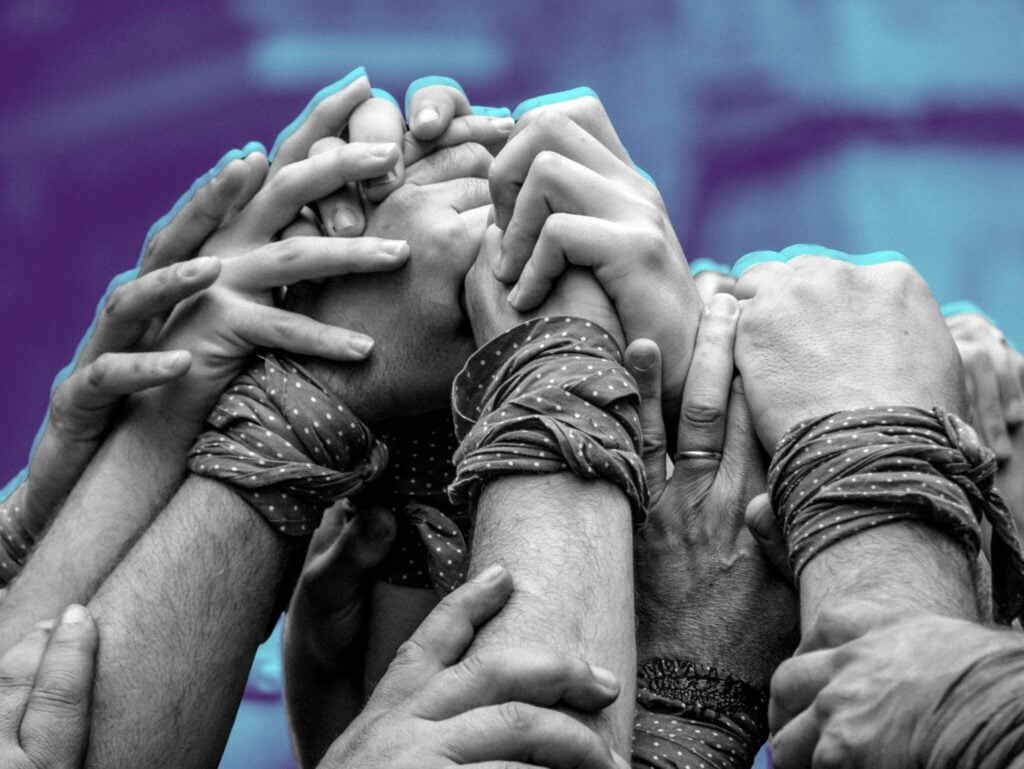Readings
- Bill Fletcher, Jr. and Bill Gallegos, “Time to Re-Align: We Can’t Win from Our Safety Zones,” Convergence, October 24, 2022.
- Building the Front, Strengthening Our Movements (video), featuring Maurice Mitchell, Alexa Horwart, Sendolo Diaminah, and Brendan Walsh, hosted by Hashim Benford and Priya Johnson, from Convergence and The Forge, March 6, 2023. If you prefer to follow this conversation in print form, an article covering this panel by Sandra Hinson, with extensive quotations from the panelists, can be found here.
- Linda Burnham, Max Elbaum and María Poblet, 2020 Was an Extraordinary Year, the Introduction to the book Power Concedes Nothing: How Grassroots Organizing Wins Elections (OR Books, 2022).
- Barbara Ransby, “Chicago’s Rich Organizing Tradition Paid Off, Delivering Victory for Brandon Johnson,” The Nation, April 13, 2023.
Key Points
- Since the 2008 financial crash, and especially since Bernie’s 2016 campaign and Trump’s election that same year, a distinct progressive trend in US politics has begun to take shape. That trend is characterized by commitment to defeat MAGA; the need to build independent power for social justice organizations in the course of the anti-MAGA fight; seeing electoral engagement as one key site for both those tasks; and broad agreement on a vision for a multiracial, gender-inclusive democracy and an economy that works for all on a peaceful and environmentally sustainable planet.
- Developing the strategic perspective of this emerging trend and uniting as much of it as possible in some common organizational form or forms, is a prime task. We must become stronger, more united, and more sophisticated if we are to navigate the complex unity-and-struggle relationship we must have with non-progressive tendencies in the broad anti-MAGA front.
- The electoral arena has been and will remain a key site of battle for the emerging progressive trend. The dominant strategy within this current was described by Deepak Pateriya in the chapter he authored in the Power Concedes Nothing book:
Primary challenges to moderate and obstructionist Democrats with candidates from the Left is important - if and when it’s based on an unromanticized analysis of local power.…[where] our base and our movements lack the power, we have to work with those Democrats, apply pressure smartly with the power we have, and aggressively grow our organized bases to change the facts on the ground over time….Also, under the current realities of political power and ideological alignment in the US, that lining up behind whoever wins a Democratic Presidential nomination (or US Senate nomination for that matter) and throwing left movements’ full electoral energy behind ensuring they win is the right and necessary thing to do. While we help elect those often mediocre candidates, we have to simultaneously work every day to build an organized and disciplined mass base and voter turnout apparatus large enough and powerful enough to command attention, instill fear, and dramatically shift the center of gravity of US electoral politics. We can’t just be marginal electoral actors from the Left. Neither can we just be unquestioning subjects of the Democratic Party as it exists.
Competing Views
There are two main alternatives to these ideas. The first argues that almost any criticism of anti-MAGA Democrats or energetic efforts to contend with them plays into the hands of the right, is too risky, and should be avoided. The second, which is often but not always combined with the “don’t-vote-for-mainstream-Democrats” view discussed in study session one, argues that leftists should only build a disciplined socialist trend, not a broader progressive one. The argument is that progressives—even some who self-identify as socialist—are not a genuine opposition force. For an expression of the second view, see For an Independent Socialist Movement, by the Marxist Unity Group in Socialist Forum.
The alternative views on both key points 1 and 2 are current expressions of longstanding differences on the left between popular front/anti-fascist unity strategies and their far left critics. See the treatment of this difference in the piece by Al Richmond in the study
syllabus appendix.
Questions for Discussion
- Looking at the resistance to MAGA since 2016, what groups do you think have played important roles in fighting back with a social justice agenda? Do you see possibilities for these groups and others to connect and coordinate work with one another?
- What are the obstacles to more unity among the different parts of the social justice movement?
- How are some of the organizations you are familiar with navigating the tension between contending with powerful non-progressive forces and uniting with these same forces against MAGA? What does pursuing that approach look like in the electoral arena and on other battlefronts?
